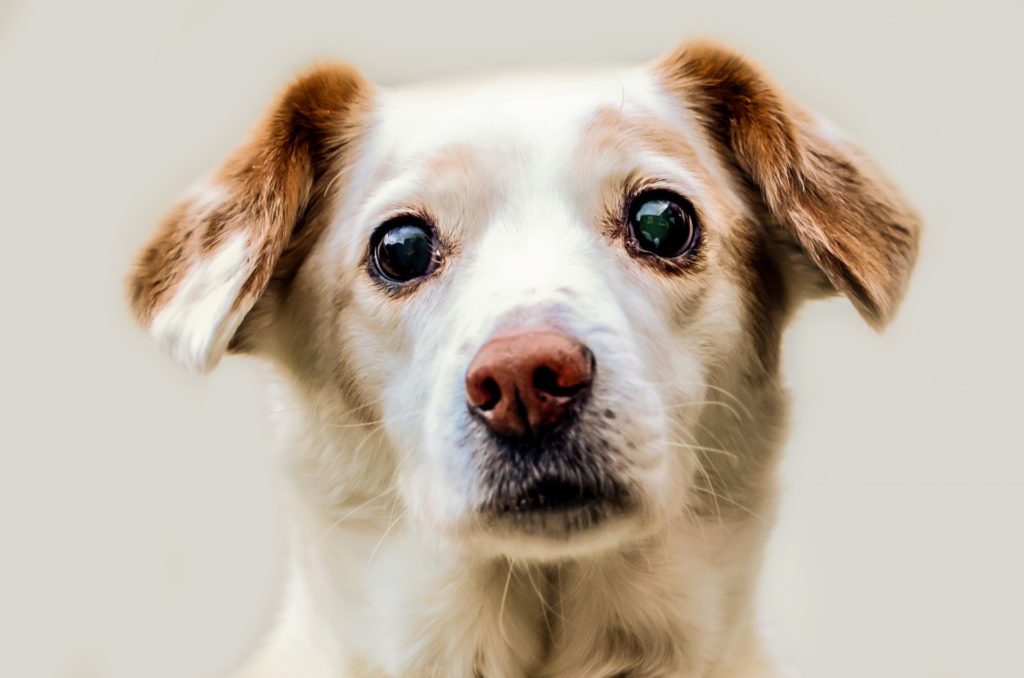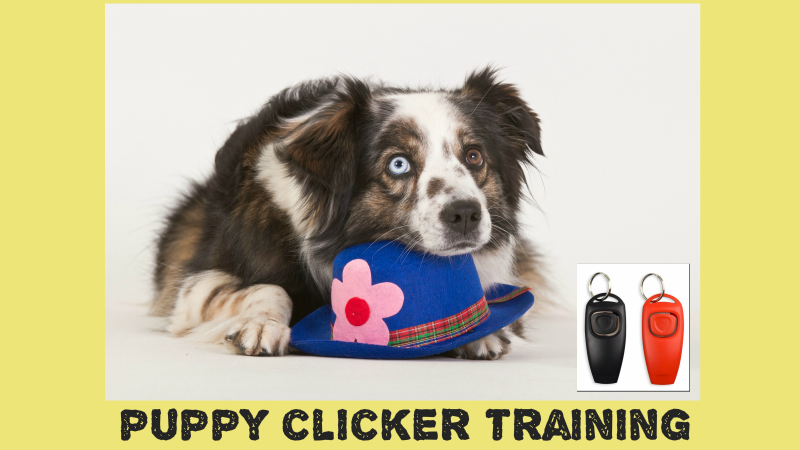Basic Puppy Training
Handheld Puppy Clicker Training Aids
Clicker Training for your puppy is a terrific, science-based way to communicate with your pet. Of the many handheld dog training aids that are available both in stores and online these days, it can be difficult to choose the best dog training aid for your canine’s obedience training.
What to Teach Your Dog ?
Way up there at the top of the list is obedience training. Part of this very early training is actually training your puppy or dog on How TO BE trained. It does seem like a little psycho jumble talk, when you say it back to yourself, but the fact remains that all dogs, and for that matter all humans too needed to be trained to learn stuff. Some may call it instinct, but this early training goes a little deeper than relying just on instinct.
Once your puppy figures out that he may receive a treat for doing something correctly, he will want to continue to do that same thing correctly, to continue to receive that treat. After a while, when that task has become very common, the treats are no longer so important for that task and you can move on to the next task, which should be a different and slightly more difficult task.
Aids to Assist with that Obedience Training
The range of things to teach your puppy could be associated with obedience, agility or any other type of teaching you want to do. There are many aids available but only a certain few will work with your dog and his temperament.
Clicker and Treats Combo
I find the best training aid to be a combination of two things. Treats and a handheld clicker for puppy. The threats are small pieces of human food chopped up and given to him when he has done something good has always worked wonders, that is unless your dog doesn’t really have an interest in treats. The clicker is small, unobtrusive and fits nicely in your hand or your pocket. This is a really cheap training aid. But, if you want to blow some cash there are hundreds of options available for you.
Clicker Concept
The concept of the clicker became very popular a number of years ago, and are still being used by many puppy and even older dog owners. There are plenty of Youtube videos that show the whole process. There is even a link to a Youtube video in this article to give you a bit more of a background in puppy training with a clicker.
Clicker Training can Lead to Conventional Training
Clicker Training is a terrific, science-based way to communicate with your pet. It’s easier to learn than standard command-based training. You can clicker train any kind of animal, of any age. Puppies love it. Old dogs really do learn new tricks. You can clicker-train cats, birds, and other pets as well. Once you and your puppy have mastered the basics of this clicker training, it is easy enough to transition to the more in-depth signals and voice training.
Clicker Basics
I have collated brief descriptions of the usual basic techniques that are involved with clicker training for a puppy :
- Push and release the springy end of the clicker. This will make a two-toned click. Then give the puppy a treat. Keep the treats small. Use a delicious treat at first: for a dog or cat, little cubes of roast chicken are always a favorite.
- Ensure that you “Click” DURING the desired behavior, not after it is completed. The timing of the click is crucial. Don’t be dismayed if your pet stops the behavior when it hears the click. The click ends the behavior. Give the treat after that; the timing of the treat is not important. It will take a little practice, so don’t be afraid to persist if at first, it does not seem to be working.
- Click when your puppy or dog does something you like. Begin with something easy. This should be something that you see your pet already doing on his own. Examples such as coming toward you, touching your hand with its nose; lifting a foot; follow a target object such as a pencil or a spoon. Click once (in-out.) If you want to express special enthusiasm, increase the number of treats, not the number of clicks.
- Keep practice sessions short, especially when your dog is a puppy. Their attention span is very short, no doubt you will already have become aware of that. Much more is learned in three sessions of five minutes each than in an hour of boring repetition. You can get dramatic results, and teach your pet many new things, by fitting a few clicks a day here and there in your normal routine.
- Fix bad behavior by clicking good behavior. Click the puppy for relieving itself in the proper spot. Click for paws on the ground, not upon you or any visitors. Let’s face it, a young puppy will always be a lot more excited when there are visitors, so he may forget some of the training you have already completed. Instead of scolding for making noise, click for silence.
- Cure leash-pulling by clicking and treating those moments when the leash happens to go slack.
- Click for voluntary (or accidental) movements toward a goal you have set. You may coax or lure the animal into a movement or position, but don’t push, pull, or hold it. Let the animal discover how to do the behavior on its own. If you need a leash for safety’s sake, loop it over your shoulder or tie it to your belt.
Don’t Wait for Perfect Behavior
Don’t wait for the “whole picture” or the perfect behavior. Click and treat for small movements in the right direction. You want the dog to sit, and it starts to crouch in back: click. You want it to come when called, and it takes a few steps your way: click.
Keep raising your goal.
As soon as you have a good response-when a dog, for example, is voluntarily lying down, coming toward you, or sitting repeatedly, start asking for more. Wait a few beats, until the dog stays down a little longer, comes a little further, sits a little faster. Then click. This is called “shaping” a behavior.
When your animal has learned to do something for clicks, it will begin showing you the behavior spontaneously, trying to get you to click. Now is the time to begin offering a cue, such as a word or a hand signal. Start clicking for that behavior if it happens during or after the cue. Start ignoring that behavior when the cue wasn’t given.

Clicker training is not command-based.
Don’t order the animal around; clicker training is not command-based. If your pet does not respond to a cue, it is not disobeying; it just hasn’t learned the cue completely. Find more ways to cue it and click it for the desired behavior. Try working in a quieter, less distracting place for a while. If you have more than one pet, separate them for training, and let them take turns.
Carry a clicker and “catch” cute behaviors like cocking the head, chasing the tail, or holding up one foot. You can click for many different behaviors, whenever you happen to notice them, without confusing your pet.
If You Get Mad, Put the Clicker Away
Training pets can be a very frustrating experience. Pets also have their “off” days, just like we do. If you go get mad or frustrated, put the clicker away until that feeling has passed. That short attention span mentioned just before will work in your favor now. It won’t be long before puppy is ready for another clicker lesson with the frustrations of the previous session far from his mind.
Don’t Mix Scoldings with Clicker Training
Try not to mix scoldings, leash-jerking, correction training with clicker training; you will lose the animal’s confidence in the clicker and perhaps in you.
If you are not making progress with a particular behavior, you are probably clicking too late. Accurate timing is important. Get someone else to watch you, and perhaps to click for you, a few times. Explain what you are doing to them and get them to try and do the same. Sometimes, when you step back a little, you can see things differently, enough to figure out what you might need to do differently.
Above all, have fun. Clicker training is a wonderful way to enrich your relationship with any learner.
No Progress ?
If you still have no progress with this puppy clicker training, you may have to concede that maybe this is not the training that your puppy or dog can learn by. You may need to consider using an alternate puppy training aid.

